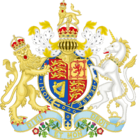Burma Independence Act 1947 facts for kids

|
|
| Long title | An Act to provide for the independence of Burma as a country not within His Majesty's dominions and not entitled to His Majesty's protection, and for consequential and connected matters. |
|---|---|
| Citation | 11 & 12 Geo. 6. c. 3 |
| Introduced by | Clement Attlee, Prime Minister |
| Dates | |
| Royal assent | 10 December 1947 |
| Commencement | 4 January 1948 |
| Other legislation | |
| Repeals/revokes |
|
| Repealed by | Statute Law (Repeals) Act 1989 |
|
Status: Repealed
|
|
| Text of statute as originally enacted | |
The Burma Independence Act 1947 was a special law passed by the Parliament of the United Kingdom. This law gave independence to Burma, which is now known as Myanmar. The Act was officially approved on 10 December 1947. Burma became a fully independent country on 4 January 1948. It became a republic, meaning it had its own elected leader, and was no longer part of the Commonwealth of Nations.
Contents
What the Independence Act Did
This important law had several key parts:
- Burma became an independent country on 4 January 1948.
- The British King's control over the Karenni States in Burma ended on the same day.
- Most people who were considered British subjects because of their connection to Burma stopped being British subjects on 4 January 1948. They became citizens of independent Burma.
Debates in Parliament
When the law was being discussed, there were important speeches in the British Parliament.
Prime Minister Attlee's View
The Prime Minister, Clement Attlee, introduced the law. He explained that its main goal was to respect the wishes of the Burmese people. Their elected leaders wanted Burma to become an independent country. They also wanted Burma to leave the British Commonwealth of Nations, which is a group of countries that were once part of the British Empire.
Attlee said that in the future, the relationship between Burma and the United Kingdom would be based on friendship. He mentioned that his government wished Burma had chosen to stay in the Commonwealth. However, they respected Burma's decision.
Protecting Minority Groups
The Prime Minister also spoke about protecting minority groups in Burma. He said the UK government had a duty to make sure these groups were treated fairly under Burma's new Constitution. He was happy that this seemed to be the case.
Burma's History with Britain
Attlee gave a brief history lesson to Parliament. He explained that Britain's first links with Burma were through the East India Company. Burma was a kingdom back then. In 1886, the whole country became part of the British Empire. So, British rule over all of Burma had lasted just over 60 years.
He also mentioned that in 1945, the UK government had announced a plan for Burma. This plan aimed for Burma to become fully self-governing. It involved Burmese representatives creating their own constitution. After this, a Burmese government was formed under Aung San. Elections were held for a Constituent Assembly, and Aung San's party won most of the votes.
Attlee noted that one of the biggest challenges was the position of the hill tribes. These included the Chins, Kachins, Shans from the Shan States, and the Karens. These groups had been governed separately until 1935. He ended by saying he believed Burma's future would be "bright."
Winston Churchill's Concerns
The Leader of the Opposition, Winston Churchill, had strong disagreements with the government's plan. He was sad that the law would "sweep away" Britain's position in Burma.
Churchill argued that the original plan in 1945 was for Burma to become a British Dominion. This meant it would be self-governing but still connected to Britain. He believed this could have been done in an orderly way. Instead, he felt the British government acted from a position of weakness and too quickly.
He thought that becoming a British Dominion was a necessary step for Burma. He was upset that the law would make Burma a "foreign Power," completely separate from the British Empire. Churchill also questioned the leadership in Burma at the time. He also had "grave doubts" about whether the frontier tribes truly agreed to the new arrangements.
In the end, the law was approved on 5 November 1947. There were 288 votes in favor and 114 against.
See also

